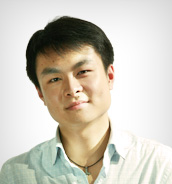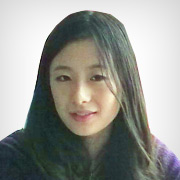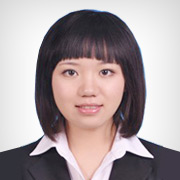Deans(院长、主任)
The academic deans are the chief executives and administrators of the various colleges or other academic divisions of an institution. The responsibilities of deans typically include implementing policies established by the board of trustees and the president; preparing the budgets and overseeing the spending of funds within the academic division ; supervising the faculty and increasing student enrollments in their college or school.
Faculty(教职员工)
In college and universities, the general roles of faculty are teaching, research, and service to the institution, the profession, and the community. Faculty members may also serve as advisers to student organizations and as members of various college committees.
Universities tend to be more multipurpose than colleges in their mission and functions. They are expected to publish their findings in scholarly books and journals so that scholars in other universities are aware of their work and contributions. Faculty members usually include the findings of their research in the courses they teach to students.
Most faculty at large universities advise students in their academic programs and direct graduate students in preparing their master’s theses and doctoral dissertations. (A thesis or a dissertation is an extensive research paper usually required for the satisfactory completion of an advanced degree).
After they are hired by a college or university, faculty members receive a faculty rank as part of their appointment. Those who are beginning their teaching career and have little previous experience enter the profession as either instructors or assistant professors. The rank of assistant professor is slightly higher than that of instructor. After an assistant professor has acquired some teaching experience, conducted research, published articles or books, and served on institutional and departmental committees, he or she is usually promoted to associate professor. The highest rank of the faculty is full professor, sometimes simply called professor.
To save money and to be able to quickly respond to changing trends in education, colleges and universities increasingly employ large numbers of part-time teachers . Part-time faculty usually receive lower salaries than faculty with full-time positions, forcing many to teach at several colleges or universities in order to earn an adequate income. Critics believe that reliance on part-time faculty and teaching assistants decreases the quality of instruction.
Instruction(授课)
Colleges and universities strive to inform students of established principles of knowledge as well as of the most recent developments in academic research. When students enroll in a course, professors provide them with a syllabus, or outline, of the course. The syllabus describes how the course will be taught. It includes a list of the required books and articles students are to read; the schedules and descriptions of course examinations, papers, and other assignments; and an explanation of methods used to evaluate or grade student performance. Methods of instruction may be as follows.
Lecture(讲座)
The lecture method is the oldest approach to teaching in higher education. Today, faculty who use the lecture method typically speak to large numbers of students in a formal and very organized manner. The faculty member presents his or her description of the key ideas of a subject, and gives interpretations that often include current research on the issue. Following the presentation, lecturers sometimes invite students to ask questions on the material.
Lecture Discussion(主题讨论)
Many faculty members employ a combination of lectures and small group discussions. In the lecture-discussion method, professors lecture to a large group of students and then divide the class into smaller discussion sections. They lead the discussion on the lecture topic, answer questions, and test the students with quizzes or exams.
Discussion(讨论)
Professors often use a discussion format of instruction in institutions that emphasize a high level of teacher-student interaction. In this teaching method, the professor meets with a small number of students and teaches the course by leading discussions with students.
Laboratory Sections(实验室教学)
Science courses typically include laboratory sections in which students conduct experiments that replicate or illustrate a scientific principle introduced in the course. Laboratory sections usually augment lectures or discussions. Foreign language courses also sometimes include laboratory sections in which students listen to audiotapes or use other interactive forms of instruction.
Seminars(研讨会)
Seminars consist of small groups of students who meet with a professor to research or discuss a specific topic in history, literature, or some other academic field. Seminars are more common in graduate programs. Participants in a seminar usually prepare scholarly research papers and critique one another’s work.
Clinical Experiences and Internships(实习)
Academic programs in professional fields such as social work or teacher education often require clinical experiences and internships. In these programs, students spend time at a clinic, agency, or school to observe the work of a professional in the field. In some cases the student may participate in the work as an aide.
Community Service(社区服务、社会实践)
An increasing number of college and university programs require students to engage in a community service project as part of their degree program. To fulfill this requirement, students may assist in clinics, participate in reading programs at local schools, or volunteer at homeless shelters. Colleges and universities that require these programs consider community service an essential part of a well-rounded education.
Distance Education(远程教育)
In addition to conventional methods of instruction conducted on campus, many colleges and universities offer distance education programs that use technology to carry instruction to students in off-campus locations. Distance education programs enable faculty and students to communicate with one another by using such technologies as computers, artificial satellites, radio, and television. These programs appeal to many institutions that wish to reduce costs, because the technology enables relatively few faculty members to teach a large number of students. Distance education also appeals to students who, for any number of reasons, cannot attend classes on campus.
Courses of Study(学习课程)
Most undergraduate degree programs require students to complete a concentration of courses, called a major, in a particular academic field such as history, biology, mathematics, business, or computer science. Many colleges and universities encourage or require students to complete an academic minor as well as a major(辅修和主修). A minor also requires a concentration of courses in a particular field, but with less stringent requirements. Some students broaden their course of study still further by pursuing two independent majors.
Most colleges and universities also offer interdisciplinary majors or academic programs that allow students to take courses in a number of fields. For example, students who major in an international studies program may take courses in history, economics, political science, foreign language, and other fields.
Student Life(日常生活)
Because each college or university features a different campus environment, the day-to-day life of students varies widely from one school to another. The following sections describe some of the most common features of student life at four-year colleges and universities.
Housing(住)
Some institutions require that undergraduate students live in college- or university-approved housing, especially during their first and second years. At other institutions, students may live either on or off campus. Some students organize their own cooperative living arrangements and jointly rent apartments or houses to reduce housing and food expenses.
Most students who live on campus live in residence halls owned and operated by the college or university. These facilities, known as dormitories, may be restricted to a single sex occupancy. Residence halls usually have their own student governing organizations that set rules and procedures for the facilities. They also may provide food service in dining rooms and cafeterias.
Food Services(饮食)
Students who live on campus may eat meals in their residence hall, in campus cafeterias, or in other campus dining rooms. Most colleges and universities have buildings—often called student unions—that provide a variety of services, including food service in dining rooms and cafeterias.
Student Services(学生服务)
Colleges and universities provide a wide range of services to students. Many provide student health services in clinics staffed by health care professionals. Most schools also offer student health insurance that helps pay medical costs, if needed.
Colleges and universities usually provide learning centers to assist students who are experiencing difficulties in their classes. Counseling services are also available for students dealing with personal difficulties. Career placement centers provide help in making career decisions and finding jobs after completing college.
Extracurricular Activities(课外活动)
Colleges and universities offer a range of extracurricular activities that can enhance the overall experience of college students. Large universities typically have programs in football, basketball, soccer, volleyball, tennis, swimming, track, and other sports. Intercollegiate sporting events are also popular attractions for other students and alumni to attend as spectators.
College and university students may also participate in student government or serve on various institutional committees. The student government advocates student concerns to the school faculty and administration, and offers employment or volunteer opportunities for students. Student governments generally allocate funds to various student organizations such as newspapers, drama groups, and film societies.
Problems of Student Life(问题)
Colleges and universities have many of the same problems found in the larger society, such as violence and crime. School policies try to govern these problems and reduce their effects. Many schools have also introduced policies aimed at eliminating the widespread problem of binge drinking, in which students consume dangerous amounts of alcoholic drinks at campus parties.
Personal Interview(面试)
Sometimes an applicant may also meet with a faculty member. Interviews with an admissions officer allow the admissions officer to further evaluate the applicant’s strengths. In addition, they offer the applicant an opportunity to ask questions about the institution and to demonstrate personal communication skills.
Campus Visits(校园参观)
Before making a decision about which college to attend, most applicants find it useful to visit one or more schools, meet with admissions personnel, and take guided tours of the campus. Most colleges and universities arrange such visits and encourage prospective students to visit classes and various extracurricular activities to get an idea of the style of life and learning at the particular institution.
Tuition(学费)
The cost of attending colleges and universities has steadily increased since the 1980s. Most public institutions have raised tuition rates to compensate for the loss of funds. Meanwhile, both public and private institutions have had to meet increased expenditures for faculty and staff salaries, construction, and general operations.
In the United States, the average tuition with room and board at a four-year public college for in-state residents during the 1978-1979 academic year was $1,994. By the 1996-1997 school year, the figure had reached $7,331. At private four-year schools, tuition, room, and board nationwide increased from an average of $4,514 to an average of $18,476.
More than 10 percent of full-time college students work full-time to pay for their college education. Most others work part-time to help offset the costs of attending college.
Financial Aid(经济支持)
Students may apply for and receive financial aid to help pay tuition and other costs of attending college. Aid may be either a grant based on financial need, a merit-based financial award given to the student, or a loan that the student must repay with interest in the future.
Degrees(学位)
Requirements for the completion of academic degrees vary from one institution to another. The most common degree is the bachelor’s degree, which is usually conferred at the completion of a four-year program of study. Bachelor’s degrees are awarded in the liberal arts and sciences, education, business, and other fields. The bachelor’s degree may be a bachelor of arts (B.A.) or bachelor of science (B.S.) degree, depending on the major course of study completed by the student. For example, a chemistry major would receive a B.S. degree, whereas a history major would receive a B.A. degree.
A student may pursue a master’s degree after completion of a bachelor’s degree. Students pursuing a master’s degree must usually also pass some sort of comprehensive examination or complete a project. Master’s degree exams may be written or oral, or a combination of both. Many master’s degree programs require satisfactory completion of a written thesis. Master’s degrees are usually either master of arts (M.A.) or master of science (M.S.) degrees, depending on the field of specialization.
Doctorates are the highest degrees conferred by universities. Most doctoral degrees are the doctor of philosophy (Ph.D.) degree, although recipients of this degree may have studied any number of academic fields other than philosophy. They must research and write a dissertation on an original topic, and then successfully defend the dissertation before a committee of professors in the field.(答辩)
三、 体育锻炼 (Exercise)
Introduction
The term is usually used in reference to any activity that promotes physical fitness. Although muscle contraction is the common element of all forms of exercise, many other organs and systems are affected, for example, the heart and lungs. Many people also find that regular exercise enhances their sense of mental well-being along with their general physical health.
Today there is an increasing emphasis on preventive medicine, or maintaining health, partly as a result of the increasing costs of health care and our greater awareness of the effects of lifestyle on health and longevity. Over one-quarter of Americans (three-quarters by some standards) are significantly overweight and are at risk for a wide variety of health problems.
Aerobic Exercise(有氧运动)
Aerobic exercise uses oxygen to keep large muscle groups moving continuously at an intensity that can be maintained for at least 20 minutes. Aerobic exercise includes walking, jogging, and swimming, and is the form recommended for reducing the risk of heart disease and increasing endurance.
相关推荐:2007年大学英语四六级讲义——四级写作(上)
更多信息请访问:考试吧四六级栏目
>>>来四六级论坛看看吧
>>>四六级博客圈,你开博了吗?














